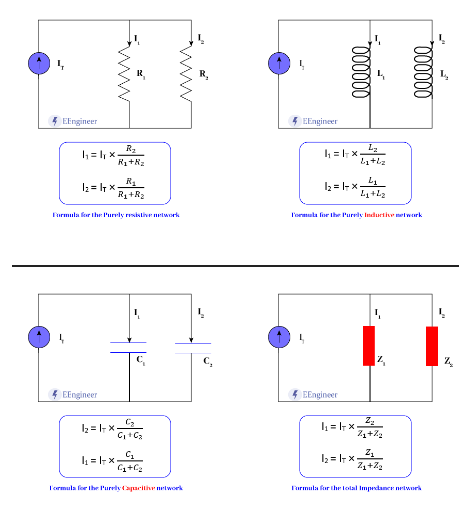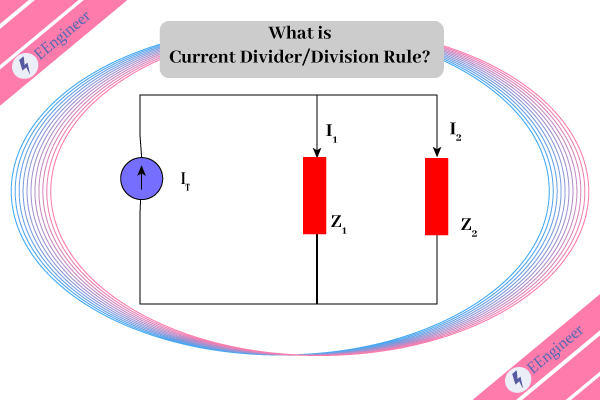Generally, we need the current division Formula where there is a parallel network of the different elements like Resistor, Capacitor, or Inductor. We can use the Current Divider/Division Rule to find the current in each branch of the circuit easily.
In this article, I have picked the best, easiest, and quickest examples to give you the best knowledge. I think you will be able to solve any problem related to the Current Divider Formula after this.
There is no need to apply KCL (Kirchhoff’s current law) and KVL (Kirchhoff’s voltage law) again and again, this is the major advantage of the Current divider formula.
Table of Contents
What is the current Divider or Division Rule?
According to the Current Divider or Division rule, the current of each branch of a parallel circuit is a fraction of the total current input to the circuit. There is no difference between the Current divider and the current division.
Current division or divider rule formula for parallel circuit
The current divider or division rule applies to any of the passive element loads. Collectively also we can calculate it for the multiple elements in one branch using the impedance method.
Some of the basic examples with the formula of this rule are below.

The equation for the current divider formula is I_2=I_Total*Z_1/(Z_1+Z_2 ).
Collectively, for the parallel circuit is “total current multiplied by (ratio of the impedance of the opposite resistor divided by impedance sum).
Current divider or division rule circuit examples
Finally, if the circuit is having parallel branches of the same impedance. Then by this rule, they will have the same currents. Here are some examples of current division or divider rules.
Current division in two same impedance branches
This means that there are two parallel branches of the same resistance. Then the current in them will be the same. That is I/2 in each.
Current division in three same impedance branches
If there are three parallel branches of the same resistance or impedance. Then the current in them will be the same i.e., I/3 in each.
How does current divide in a parallel circuit?
The current in a parallel circuit is divided depending on the impedance of each branch. A branch having a larger impedance will have a lesser current. Whereas a branch having lesser impedance will have more current. So it does not violate KCL and KVL.
Lastly, Don’t forget to mention your thoughts on this in the comment box.

